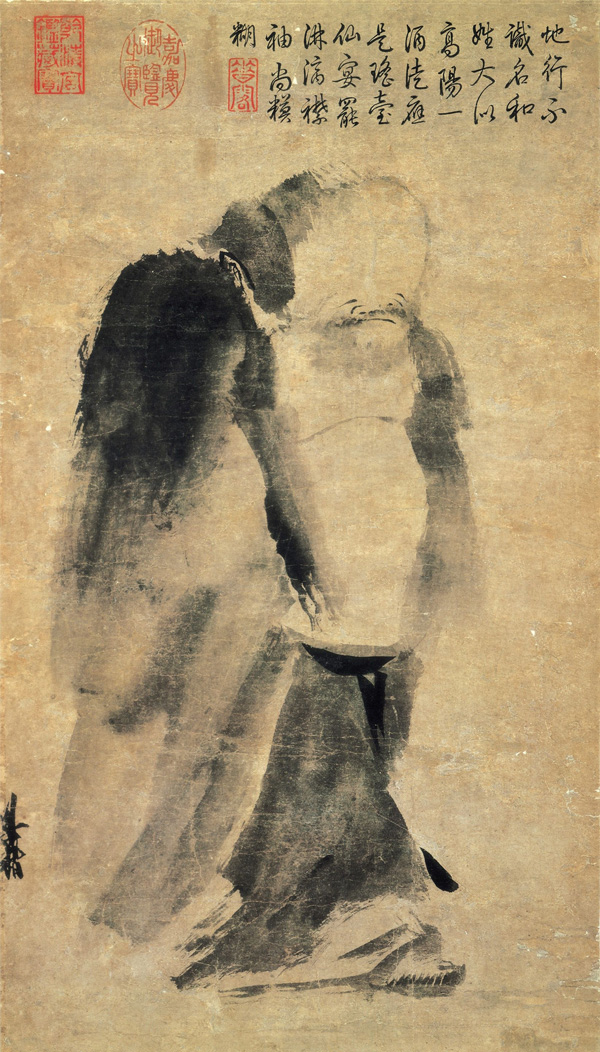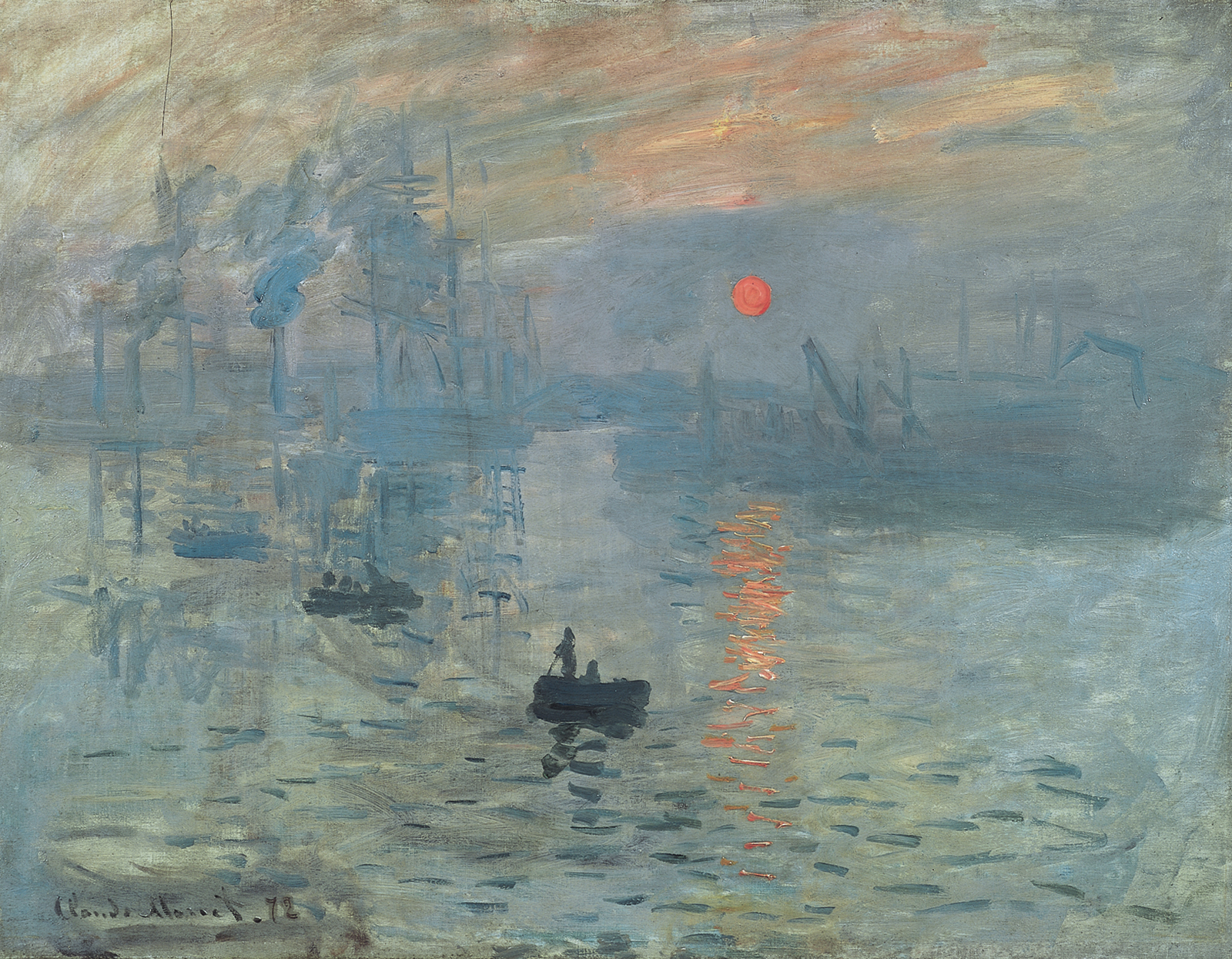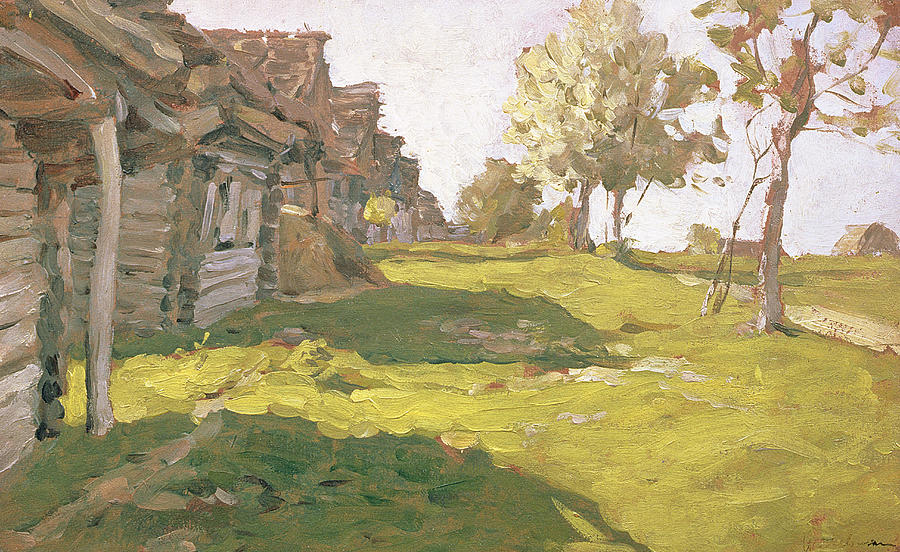As suggested during my Pitch presentation, I have started looking at some of the traditioanl art and artists that can be relevant on serve as inspiration to my project.
I think one of the things that inspires me is Traditional Chinese ink painting. Mainly because this medium has similar properties to watercolour with which I'm quite familiar. It can have the same minimalistic and ‘translucent’ feel as the watercolour and if successfully used adds the same translucent and ‘flowing’ property to an artwork. Chinese painting seem to have sprung up from calligraphy and is one of the oldest artistic traditions in the world. One of the nice examples of ink and wash painting techniques can be Liang Kai painting Immortal.
Liang Kai. 1140 - 1210. Immortal in Splashed Ink. [online image]. National Palace Museum, Taipei. Available from: http://www.chinaonlinemuseum.com/painting-liang-kai-immortal-in-splashed-ink.php [Accessed 25 October 2013]
Only few spontaneous brush strokes on paper can give a hint on the texture of fabric folds (light vs. heavy or smooth vs. rough), persons weight as well as convey mood of the painting.
This type of artwork reminds me somewhat Ōkami (2006) game art.
Joseph Mallord William Turner works are really interesting because of the way he uses colour and light in his paintings. I do like the blurriness of the objects. He manages to convey the atmosphere of the scene.
Turner, J.M.W., 1819. Naples and Vesuvius, from the Hill beneath Certosa di San Martino and Castel Sant'Elmo. [online image] Tate. Available from: https://www.tate.org.uk/art/artworks/turner-naples-and-vesuvius-from-the-hill-beneath-certosa-di-san-martino-and-castel-d16101. [Accessed 25 October 2013]
Turner, J.M.W., 1841. View of Venice - Ducal Palace, Dogana, and San Giorgio. [online image]. Available from: http://commons.wikimedia.org/wiki/File:View_of_Venice_-_Ducal_Palace,_Dogana,_and_San_Giorgio,_by_J._M._W._Turner.jpg. [Accessed 25 October 2013]
Turner, J.M.W., 1844. Rain, Steam and Speed – The Great Western Railway. [online image]. Available from: http://pictify.com/424553/jmw-turner-rain-steam-and-speed-the-great-western-railway. [Accessed 25 October 2013]
I also like the texture of the paintings and find that some of the Braid (2008) backgrounds have that same washed out, quality. I think Turners painting style (oils as well as watercolours) can work really well for game backgrounds: provide enough interests but not overwhelm the foreground game action.
Claude Monet works have a lot of very visible loose brush strokes: typical of impressionist art. What I like about it is the atmosphere that is created by the colour as well as those individual brushstrokes that manage to define things on a canvas without the need for all the detail. This type of painting technique leaves 'space' for the viewers’ interpretation which I think is a nice thing to have. Also brush strokes become individual lines on a canvas that can serve many purposes at the same time: help create mood (flowing lines vs. angled ones), contribute to overall composition as well as serve as an artist signature.
Monet, C. 1897. Arm of the Seine near Giverny. [online image]. Musée d'Orsay, Paris, France. Available from: http://www.claudemonetgallery.org/Arm-Of-The-Seine-Near-Giverny-In-The-Fog2-large.html . [Accessed 25 October 2013]
Monet, C. 1872. Impression, Sunrise. [online image]. Musée Marmottan, Paris, France. Available from: http://en.wikipedia.org/wiki/Impression,_Sunrise . [Accessed 25 October 2013]
David Hellman, Braid (2008) artist, in his blog ( http://www.davidhellman.net/blog/the-art-of-braid-index ) mentioned that he was inspired by impressionists art/artists. I think it is quite evident in final game art style that he created for Braid.
Some of the Isaac Ilyich Levitan landscape paintings are not really done in impressionist style however they seem to convey an impression of him trying to capture nature in a moment.
Isaac Ilyich Levitan. 1898. Sunlit Day a Small Village. [online image]. Tretyakov Gallery, Moscow, Russia. Available from: http://fineartamerica.com/featured/sunlit-day-a-small-village-isaak-ilyich-levitan.html [Accessed 25 October 2013]
Levitan, I. I. 1885. Snowbound Garden 1885. [online image]. Tretyakov Gallery, Moscow, Russia. Available from: http://www.oceansbridge.com/oil-paintings/product/81161/snowboundgarden1885 [Accessed 25 October 2013]
Vincent Van Gogh post-impressionist painter is known for his bold colours, rough and daring brush strokes.
Van Gogh, V. 1889. Starry Night. [online image]. Museum of Modern Art, New York. Available from: http://www.vangoghgallery.com/painting/starry-night.html [Accessed 25 October 2013]
Technical practise research some videos some of the painters books
In his Starry Night painting swirling brush strokes in the night sky creates motion and keeps viewers eyes moving around the canvas. Also, yellow stars and their halos are juxtaposed against the blueness of the sky.
I think Van Gogh painting style is very tactile, painterly like and it would be very interesting to try and reproduce this traditional art feeling/look in to 2D game art.
Although there are some digital artists/art out there that try to imitate the oils or the watercolours, or some other traditional media, somehow hardly any of it has actually made it in to video games yet. And if this kind of art has a cultural value why not take it and try to apply it somewhere else, especially if it lets people enjoy it more easily and excites their imagination?..
Clover Studio. 2006. Ōkami. PS2. Capcom
Number None, Inc. 2008. Braid. Microsoft Windows. Number None, Inc
I have also started reading Punch, K. P. book Introduction to Social Research: Quantitative & Qualitative Approaches because I need to find out more about research practises for my proposal document and overall project structure. basically, what I can/need to do to satisfy the research project convention.
* Punch, K. P. 1998. Introduction to Social Research: Quantitative & Qualitative Approaches. London: Sage.









No comments:
Post a Comment